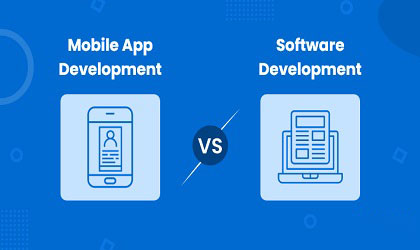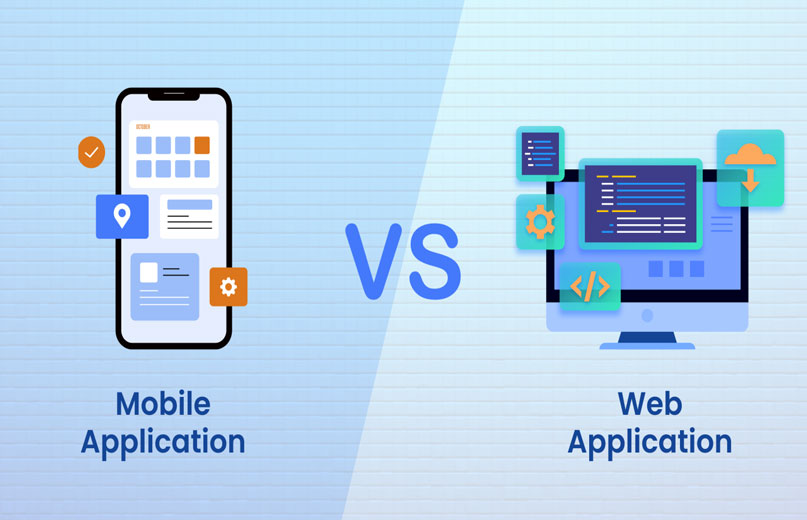In today’s digital age, having a robust online presence is no longer a luxury but a necessity for businesses of all sizes. As consumers increasingly turn to digital platforms for their shopping, information, and services, Web and Mobile App Development has become a critical strategy for organizations seeking to effectively engage with their customers. This article delves into the significance of Web and Mobile App Development, the processes involved, and best practices to ensure success in this dynamic landscape.

The Importance of Web and Mobile App Development
1. Enhanced User Engagement
The proliferation of smartphones and tablets has transformed how businesses interact with their customers. Mobile applications provide a direct and convenient channel for engagement, allowing users to access products and services at their convenience. A well-designed app, powered by effective Web and Mobile App Development, can significantly improve user experience, fostering deeper connections and enhancing customer loyalty. When users find an application easy to use and enjoyable, they are more likely to return and recommend it to others.
For example, consider how many users check their favorite shopping apps daily or frequently interact with social media platforms. These applications create a constant dialogue with users, allowing businesses to maintain relevance in their customers’ lives. The more engaging an app is, the more likely users will spend time within it, increasing opportunities for businesses to convert engagement into sales. This engagement is made possible through strategic Web and Mobile App Development.
2. Increased Accessibility
Web and Mobile App Development ensures that businesses are accessible to customers around the clock. Whether through a responsive website or a dedicated mobile app, users can find information and services whenever they need them. This constant availability not only increases customer satisfaction but also encourages repeat business. Customers today expect immediate access to information; if they can’t find it on your platform, they’ll likely turn to competitors.
Moreover, mobile apps can send push notifications to users, keeping them informed about new products, discounts, or other important information. This form of direct communication can lead to increased sales and improved customer retention as businesses stay on their customers’ radar without being intrusive. This capability underscores the importance of Web and Mobile App Development in maintaining business presence.
3. Competitive Advantage
In a crowded marketplace, a user-friendly website and a functional mobile app can set a business apart from its competitors. Investing in high-quality Web and Mobile App Development helps attract new customers and retain existing ones, driving overall growth and profitability. Businesses that prioritize digital solutions are more likely to stand out and succeed.
For instance, think of brands like Amazon and Uber, which leverage their mobile apps to provide seamless user experiences. These applications not only serve their primary purpose but also continually evolve to meet user demands, making them leaders in their respective industries. A competitive edge is achieved through innovation and adaptability, which custom Web and Mobile App Development can facilitate.
4. Data Collection and Analytics
Web and mobile apps provide businesses with valuable insights into user behavior and preferences. By analyzing this data, organizations can refine their marketing strategies, improve customer service, and tailor their offerings to better meet customer needs. This data-driven approach is vital for making informed business decisions.
For example, businesses can track which features of their apps are most used, understand peak usage times, and identify areas where users drop off. Armed with this information, they can make strategic changes that enhance user experience and improve conversion rates. In essence, effective Web and Mobile App Development empowers businesses to make better decisions, ultimately leading to more successful outcomes.
The Development Process
1. Planning and Research
The first step in Web and Mobile App Development involves thorough planning. This phase includes defining the app’s purpose, identifying the target audience, and outlining key features. Researching market trends and analyzing competitors can help shape a robust development strategy.
During this phase, businesses should consider their goals and how a web or mobile application can help achieve them. For instance, is the aim to increase sales, improve customer service, or enhance brand visibility? Clear objectives guide the development process and inform decisions throughout the project.
2. Designing the User Interface (UI) and User Experience (UX)
Once planning is complete, attention shifts to designing the app’s interface and user experience. This step entails creating wireframes and prototypes that focus on usability and visual appeal. An intuitive design ensures that users can navigate the app easily, enhancing overall satisfaction. Effective Web and Mobile App Development relies on creating interfaces that resonate with users while ensuring functionality.
User-centered design principles are critical here. Designers should create an interface that is not only aesthetically pleasing but also functional and accessible. This often involves iterative design processes, where prototypes are tested and refined based on user feedback. The goal is to create an engaging experience that keeps users coming back.
3. Development
During the development phase, actual coding takes place. Web applications are typically built using languages like HTML, CSS, and JavaScript, while mobile apps may utilize Swift or Objective-C for iOS and Java or Kotlin for Android. Backend development is also essential to ensure seamless functionality across the application. Web and Mobile App Development requires collaboration among developers, designers, and project managers to ensure the final product meets business goals.
Agile development methodologies are often adopted to allow for flexibility and ongoing adjustments based on testing and feedback. Effective communication within the development team can significantly enhance the efficiency and effectiveness of the development process.
4. Testing
Testing is a critical component of Web and Mobile App Development. Various types of testing—functional, usability, and performance—are conducted to identify and address any bugs or issues before the app goes live. Quality assurance ensures that the application meets all technical requirements and provides a smooth user experience.
Automated testing tools can aid in this process, allowing developers to run tests quickly and efficiently. Regular testing throughout the development phase helps catch issues early, saving time and resources in the long run. A robust testing phase is vital to delivering a reliable and high-performing application.
5. Deployment
Once testing is complete, the app is ready for deployment. For web applications, this means launching the site on a secure web server. Mobile apps are submitted to app stores like the Apple App Store or Google Play Store, making them available to users. The deployment phase marks the culmination of the Web and Mobile App Development process, making the app accessible to a wide audience.
The deployment phase also involves preparing marketing materials and strategies to promote the application. A successful launch requires more than just making the app available; businesses need to actively engage their target audience to drive downloads and usage.
6. Maintenance and Updates
The work doesn’t end at launch. Regular maintenance and updates are crucial for fixing emerging issues, adding new features, and ensuring compatibility with the latest operating systems and devices. Ongoing support is essential for long-term app success. Web and Mobile App Development should include provisions for continuous improvement to meet evolving user needs and industry trends.
Monitoring app performance and user feedback post-launch provides valuable insights for future updates. Businesses should have a strategy in place for addressing bugs and implementing user-requested features. Continuous improvement is key to retaining users and staying competitive.
Best Practices for Successful Development
1. Focus on User-Centric Design
Prioritizing user experience during the design phase is essential. Conducting user testing allows businesses to gather feedback and make necessary adjustments, resulting in a more user-friendly app. Web and Mobile App Development should always be focused on creating a product that meets the user’s needs and expectations.
2. Optimize for Performance
A slow-loading app can deter users and lead to high bounce rates. Optimizing web and mobile applications for speed and performance enhances user satisfaction and increases retention rates.
3. Ensure Security
Security is critical, especially for applications that handle sensitive user data. Implementing robust security measures, such as data encryption and secure authentication, protects user information and builds trust. Ensuring security throughout Web and Mobile App Development is non-negotiable.
4. Stay Updated with Trends
The technology landscape is constantly evolving. Staying informed about the latest trends and technologies in Web and Mobile App Development ensures that applications remain relevant and competitive.
5. Collaborate with Experts
Collaborating with experienced developers and designers provides valuable insights and expertise that can significantly enhance the app development process.
Conclusion
Web and Mobile App Development is a dynamic and integral part of modern business strategies. By understanding the importance of these platforms and adhering to best practices throughout the development process, businesses can create engaging and effective applications that meet the needs of their users.
As technology continues to evolve, the ability to adapt and innovate in Web and Mobile App Development will be crucial for long-term success in the digital marketplace. Investing in high-quality web and mobile solutions is not merely an option; it is a necessity for businesses aiming to thrive in today’s competitive environment.





